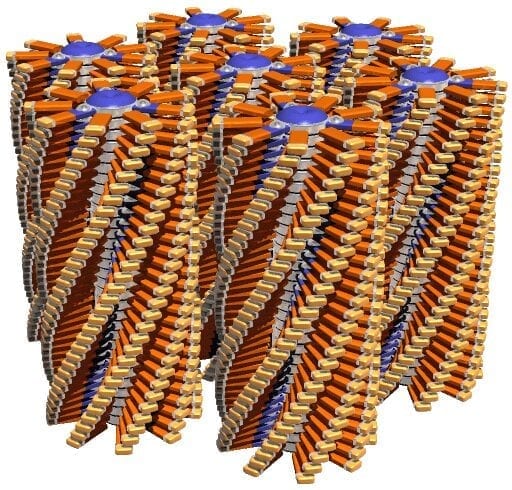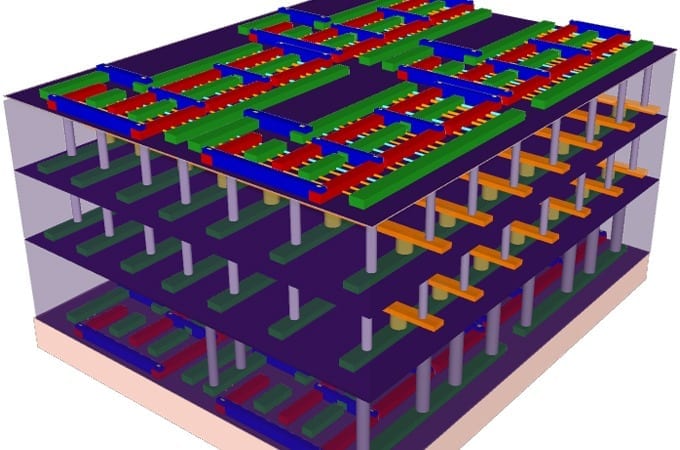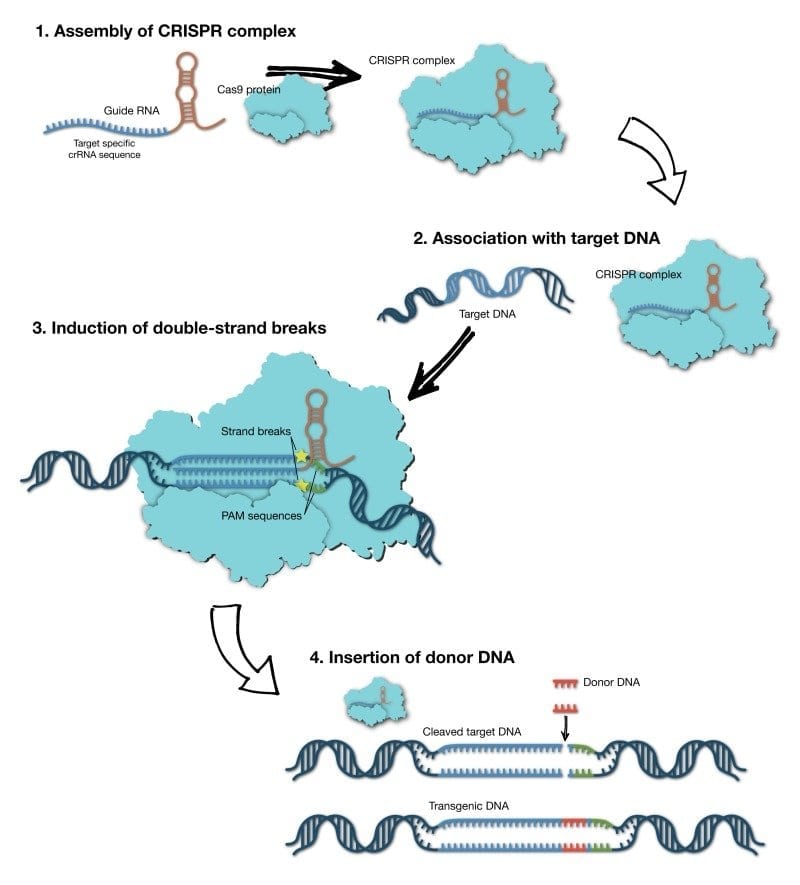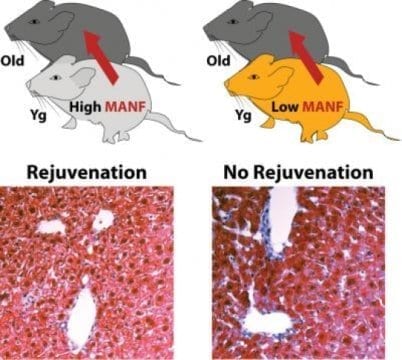
Engineers from UTokyo and RIKEN perform computational logic with light
For the first time, researchers performed logic operations — the basis of computation — with a chemical device using electric fields and ultraviolet light. The device and the pioneering methods used open up research possibilities including low-power, high-performance computer chips.
Computers need an upgrade. From smartwatches to data centers, all computers feature similar kinds of components, including processors and memory. These semiconductor chips comprise minuscule electronic transistors on beds of silicon. Such devices cannot be made much smaller because of how matter behaves at the quantum scale they’re approaching. For this reason and more, engineers devise new ways and materials to perform logic and memory functions.
Doctoral student Keiichi Yano, Lecturer Yoshimitsu Itoh and Professor Takuzo Aida from the Department of Chemistry and Biotechnology at the University of Tokyo and their team developed a device which demonstrates functions useful to computation. Conventional computers use electric charge to represent binary digits (1’s and 0’s), but the engineers’ device uses electric fields and UV light. These allow for lower power operation and create less heat than logic based on electric charge.
The device is also vastly different from current semiconductor chips as it is chemical in nature, and it’s this property that gives rise to its potential usefulness in the future of computation. It’s not just the power and heat benefit; this device could be manufactured cheaply and easily too. The device features disk and rod-shaped molecules that self-assemble into spiral staircase-like shapes called columnar liquid crystals (CLC) in the right conditions.
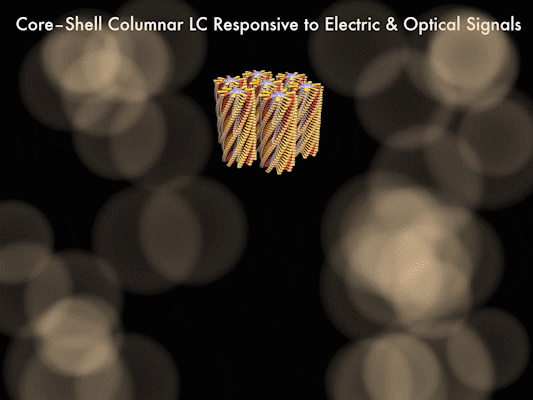
“One thing I love about creating a device using chemistry is that it’s less about ‘building’ something; instead it’s more akin to ‘growing’ something,” says Itoh. “With delicate precision, we coax our compounds into forming different shapes with different functions. Think of it as programming with chemistry.”
Before a logic operation begins, the researchers sandwich a sample of CLCs between two glass plates covered in electrodes. Light that is polarized — always vibrates in a single plane — passes through the sample to a detector on the other side.
In the sample’s default state, the CLCs exist in a randomly oriented state which allows the light to reach the detector. When either the electric field or UV light is individually switched on then off, the detected output remains the same. But when the electric field and UV light are switched on together and then off again after about a second, the CLCs line up in a way which blocks the detector from the light.
If the “output” states of light and dark, and the “input” states of the electric field and UV light are all assigned binary digits to identify them, then the process has effectively performed what is called a logical AND function — all inputs to the function must be “1” for the output to be “1.”
“The AND function is one of several fundamental logic functions, but the most important one for computation is the NOT-AND or NAND function. This is one of several areas for further research,” explains Yano. “We also wish to increase the speed and density of the CLCs to make them more practical for use. I’m fascinated by how self-assembling molecules like those we use to make the CLCs give rise to phenomena such as logical functions.”
Learn more: Light up logic
The Latest on: Programming using chemistry
[google_news title=”” keyword=”programming using chemistry” num_posts=”10″ blurb_length=”0″ show_thumb=”left”]
via Google News
The Latest on: Programming using chemistry
- Suncor donates $600k to ARI’s STEM programon May 3, 2024 at 12:14 pm
Aurora College’s STEM outreach program has funding for another four years thanks to the Suncor Energy Foundation.
- UNO Chemistry Professors Selected for NSF Awards Worth $700Kon April 30, 2024 at 7:33 am
This award validates my path to become an independent researcher in this field. It also attests to the four years I put into the development of this research ...
- Creating quantum sensors - chemistry meets physicson April 24, 2024 at 5:00 pm
Ben King didn’t set out to create a long-sought after material to be used in quantum sensing devices, but life, like quantum science, can be weird. King, a professor in chemistry at the University of ...
- School of Chemistry and Materials Scienceon April 16, 2024 at 5:01 pm
The materials science graduate program seeks to provide solutions ... and sporting equipment. Chemistry is intrinsically a part of our society from the fuels we use, the air we breathe, and the water ...
- MsC & PhD Program Requirementson March 14, 2024 at 6:22 pm
Your registration in the MSc or PhD Thesis course confirms that you are active in the Chemistry Graduate Program. Masters students enroll in CHEM 898 G-100 and Doctoral students in CHEM 899 G-100.
- Department of Chemistryon February 28, 2024 at 9:15 am
Students in the graduate program work closely with our faculty on research projects in the areas of synthesis and materials chemistry, and chemical analysis and physical characterization. You will use ...
- Chemistry Graduate Programson January 17, 2024 at 6:21 am
Please note that students in this program are not typically eligible for support through assistantships and tuition waivers. Virtually all graduate students accepted into the chemistry and ...
- Graduate Programon December 2, 2023 at 6:40 am
Master's degree candidates are chosen for admission based on readiness to be academically successful at the graduate level while making significant contributions in the research program of a ...
- Chemical Engineering Programon May 17, 2023 at 8:08 am
Students can complete their foundational courses at Bethel (chemistry, physics, math, and general education) in their first two or three years and transfer to an institution with a full chemical ...
- Using Chemistry to Find Cureson December 6, 2022 at 6:54 am
As a current member and alumna of the American Chemical Society’s Scholars Program, Fatima credits ACS with helping ... “I wouldn’t have understood the potential chemistry can have without them.” ...
via Bing News







